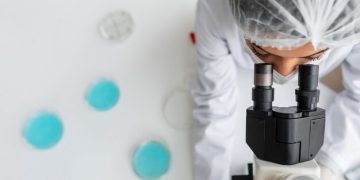
The liver is located in the upper right part of the abdomen, just below the diaphragm, and above the stomach and right kidney. It weighs about 3 pounds and is shaped like a cone. The liver receives blood from two sources and holds about 13% of the body’s total blood supply at any given time. It has two main lobes, each divided into eight segments, with each segment containing about 1,000 smaller lobes called lobules. These lobules connect to small ducts that merge into larger ones, forming the common hepatic duct. This duct carries bile from the liver cells to the gallbladder and the duodenum through the common bile duct.
The liver plays a crucial role in regulating most chemicals in the blood and produces bile to help remove waste products. It processes all the blood leaving the stomach and intestines, breaking down nutrients, creating new ones, and metabolizing drugs to make them more effective or less toxic. The liver performs over 500 functions, including removing harmful substances from the body. These by-products are expelled into the blood or bile, with bile by-products reaching the intestine to be excreted as feces, while blood by-products are filtered by the kidneys and released as urine.
Various conditions can affect the liver, with the most common leading to liver scarring, known as cirrhosis. In some cases, damaged liver tissue can regenerate. However, liver disease can sometimes cause severe symptoms and even be life-threatening. A common sign of liver issues is jaundice, where the skin and eyes turn yellow due to excess bilirubin, a yellow waste product the liver usually removes when breaking down red blood cells. Elevated bilirubin levels can indicate liver problems. Other symptoms of liver disease may also occur, and it’s important to follow tips to maintain liver health.











































